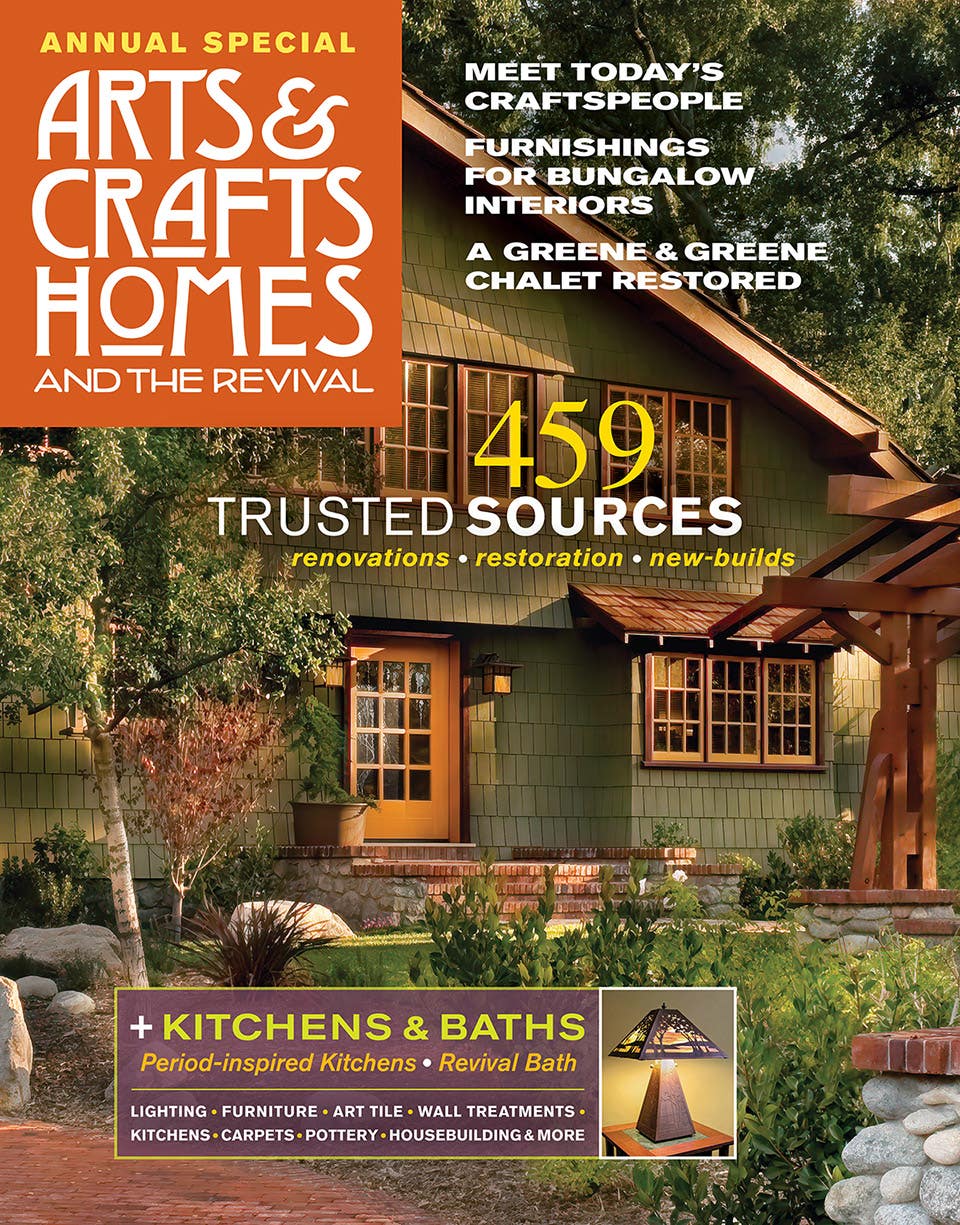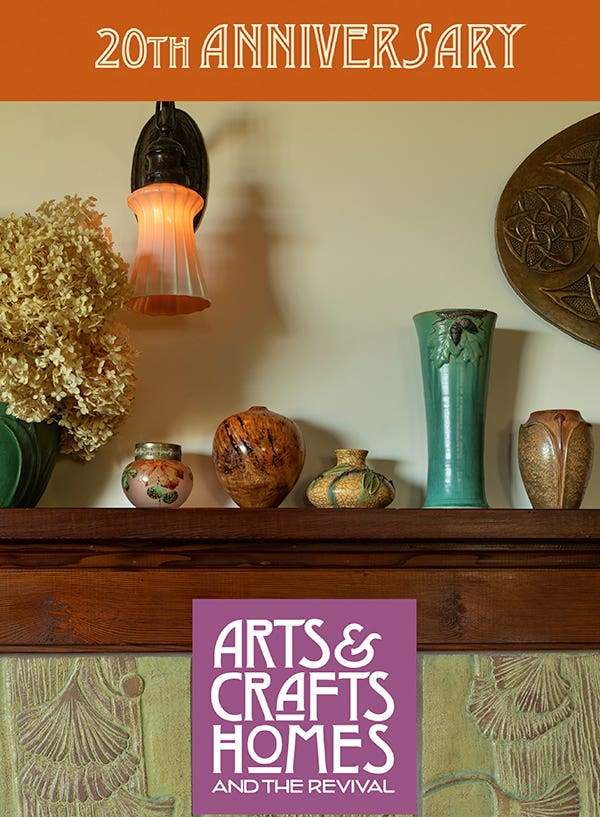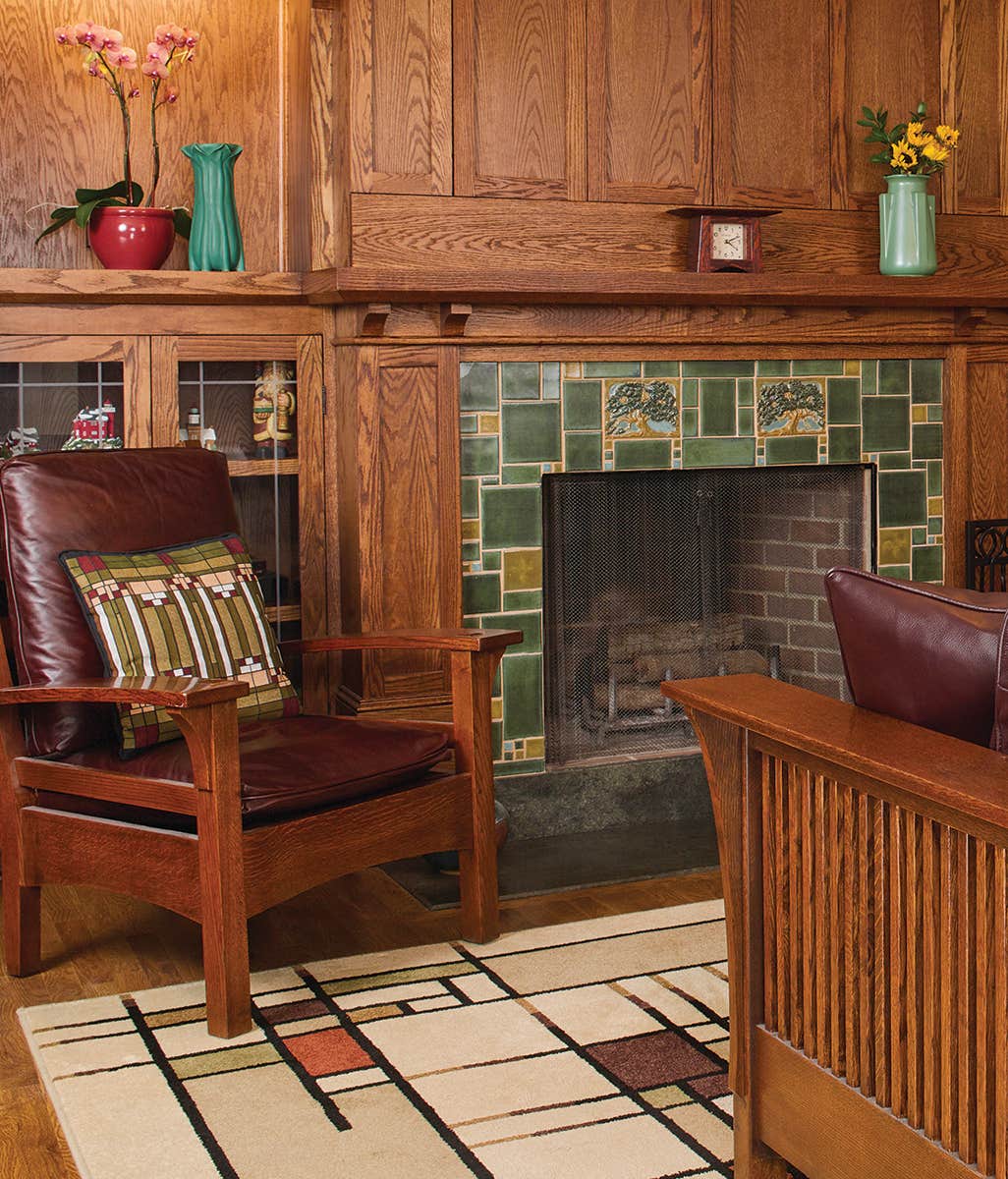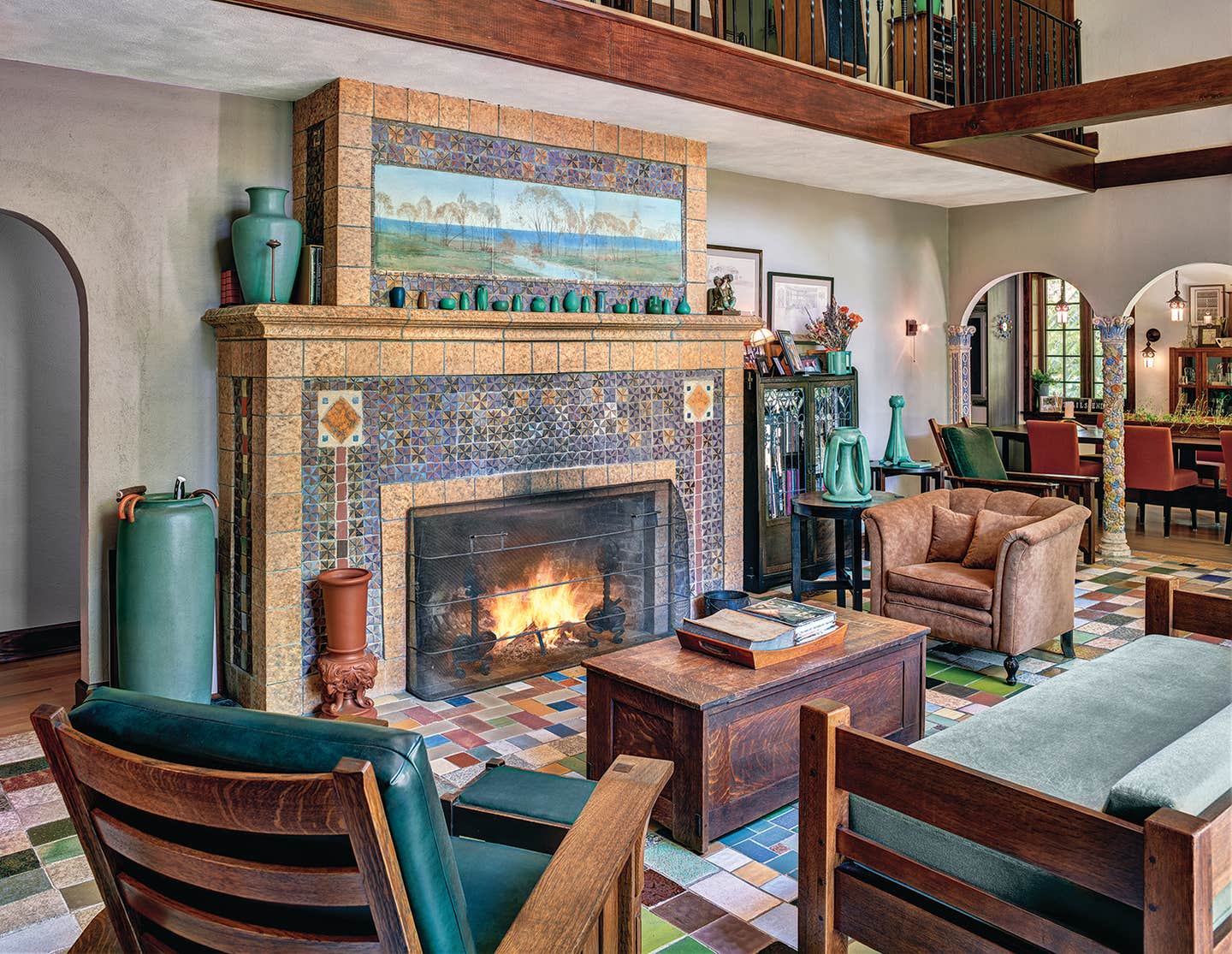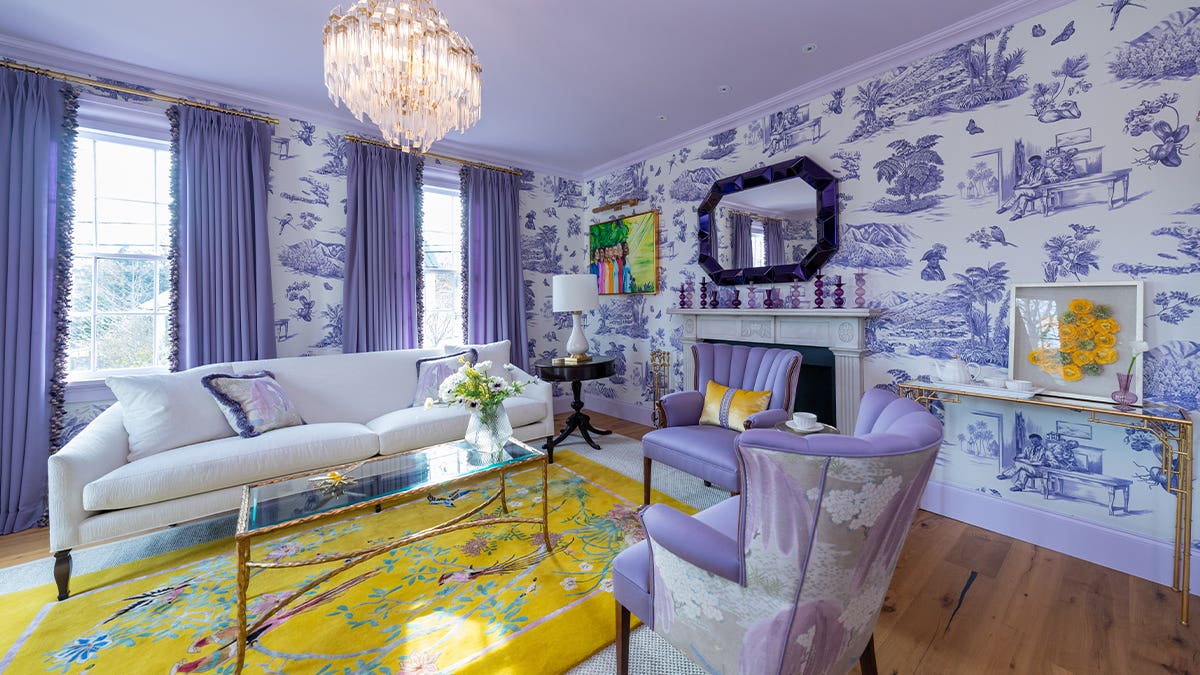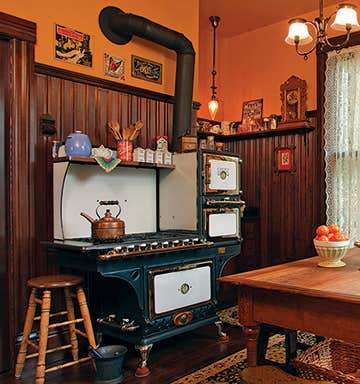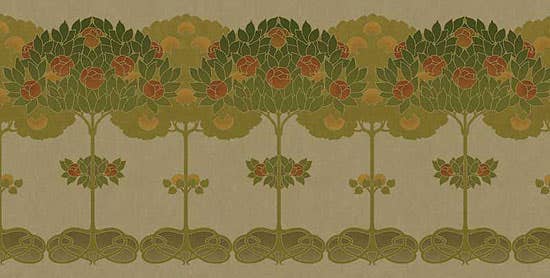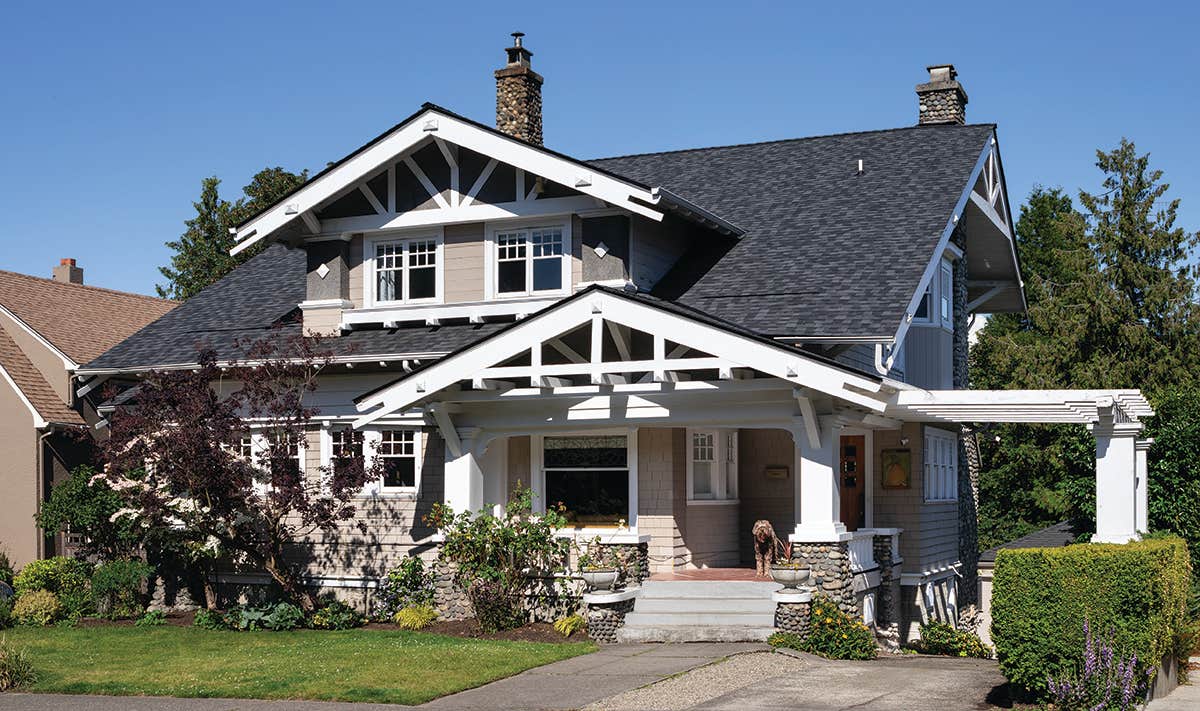The Art of a Glass Door
In a Prairie house, a design solution and inspired work by glass artist Michael Pilla turned an unloved entry into an art piece admitting beautiful light.
Story by David Heide and Michael Crull
In one of those houses where everyone comes to the back door, guests included, the consummate hosts must say: Well, if you can’t beat ’em, join ’em. Turn the back door into an event. This is our own home, which is on a busy street; the obvious entry point is from the porch. We worked with our local glass artist to solve the attractiveness problem while providing some privacy and lovely interior light, along with an additional Prairie-inspired motif.
It was a satisfying collaboration between designers and fabricator, with whom we met more than a dozen times to work out the intention, concept, glass selection, and structure. The house affords ample precedent, but we wanted to create something unique and of its time, not a replica of existing windows or the period’s glass. We chose to stylize a favorite flower—a beautiful species of amaranthus called Love Lies Bleeding.
The composition is drawn from early 20-century precedent: a border surrounds motifs based on organic forms reduced to geometric idioms. Here, the organic shapes are defined by the sketched line of copper-foil joints, which contrasts with the ordered organization of the lead cames.
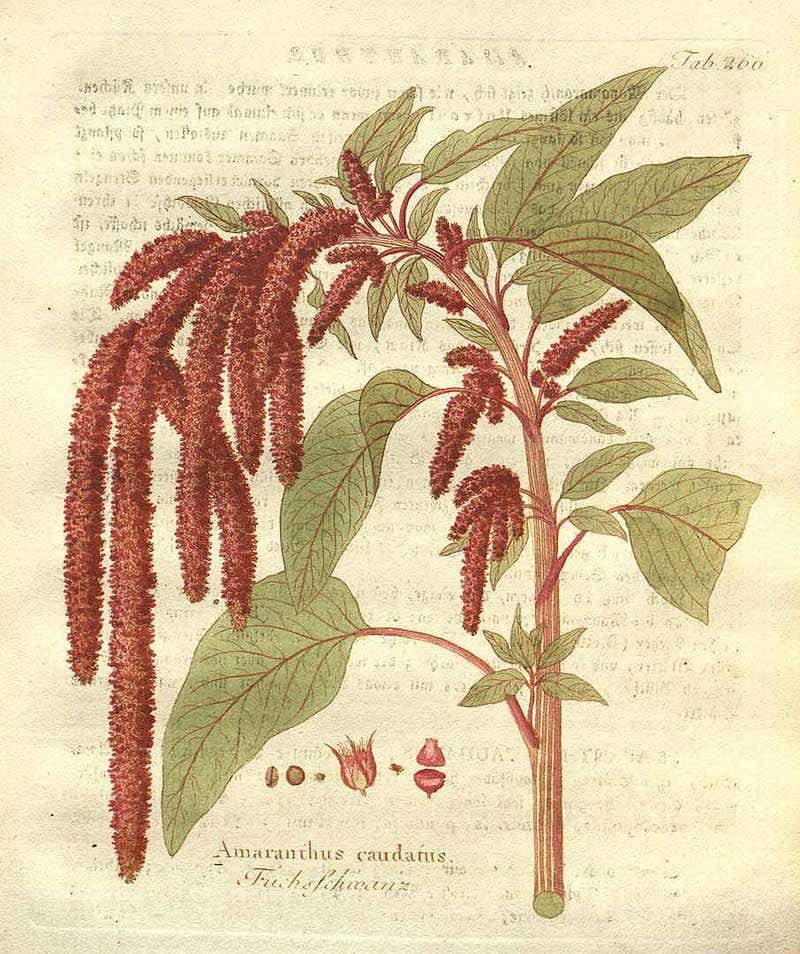

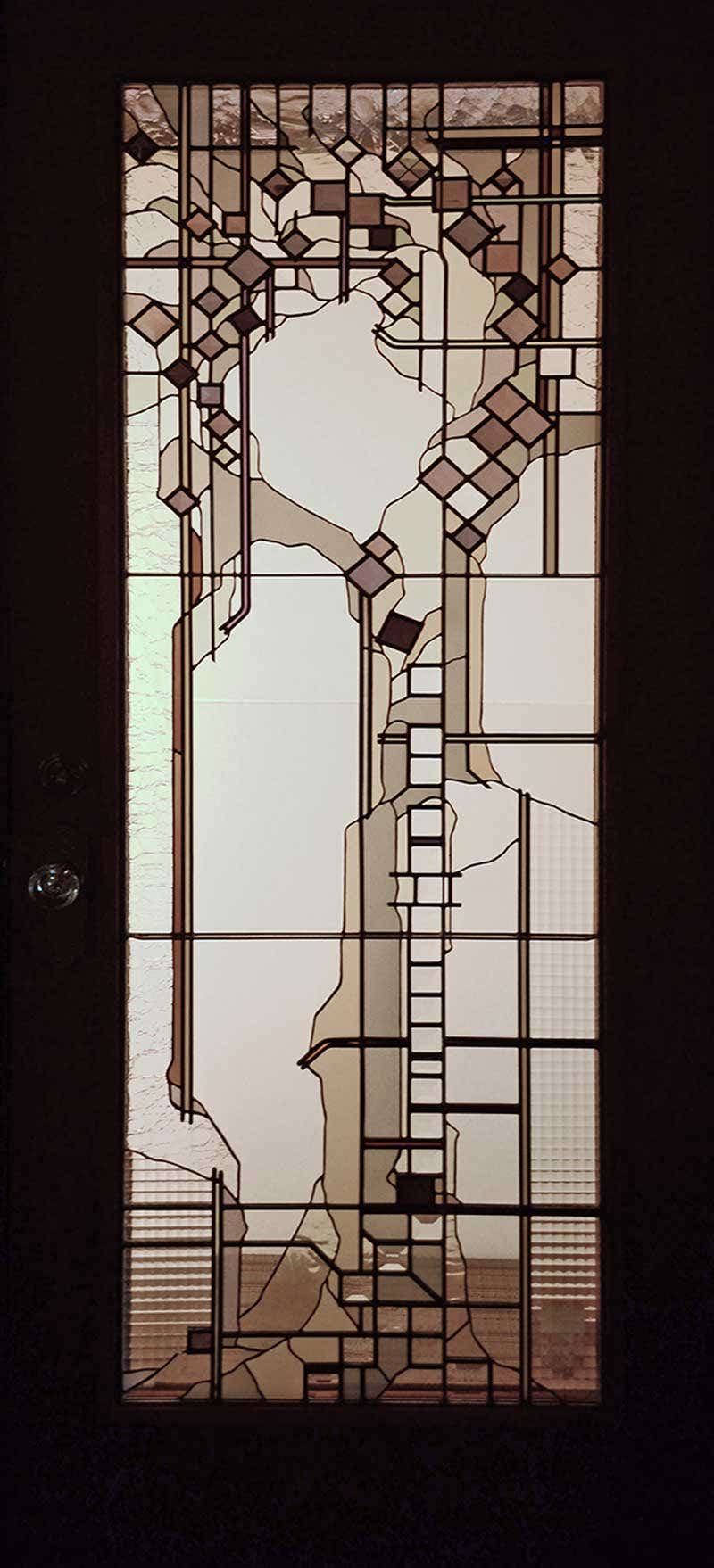
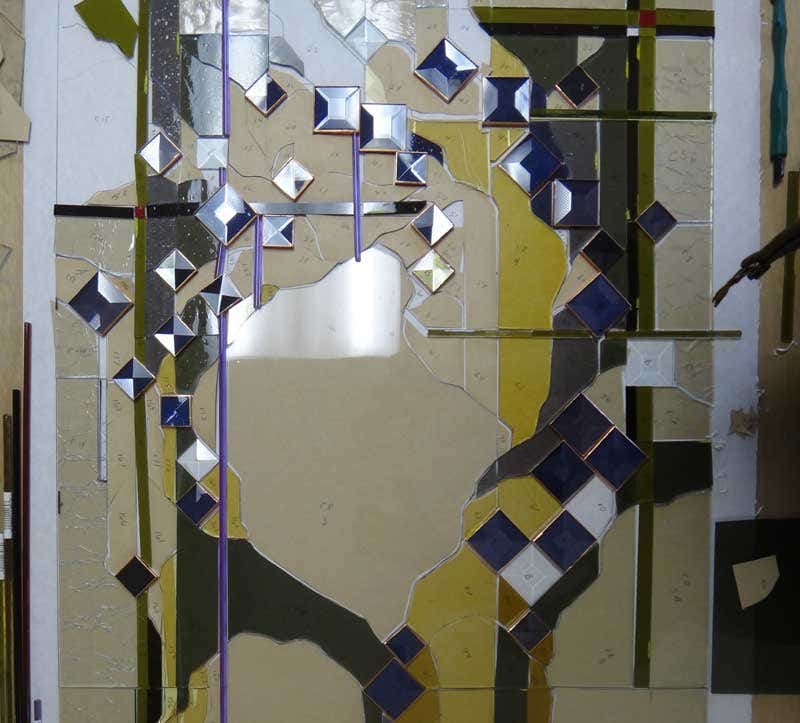
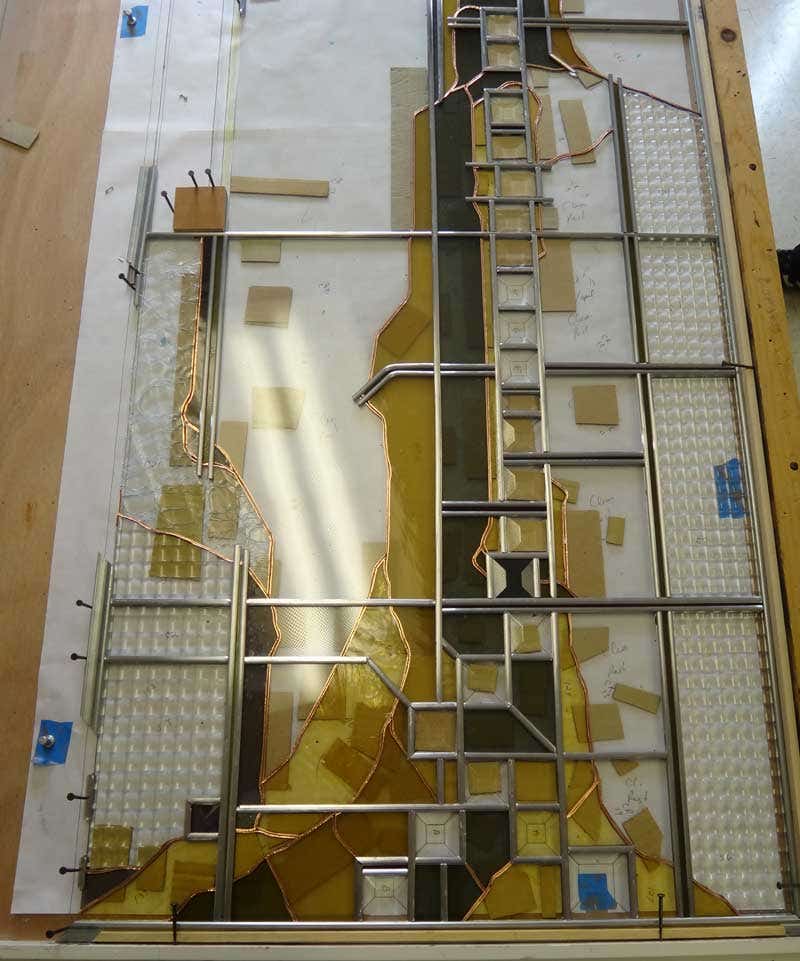
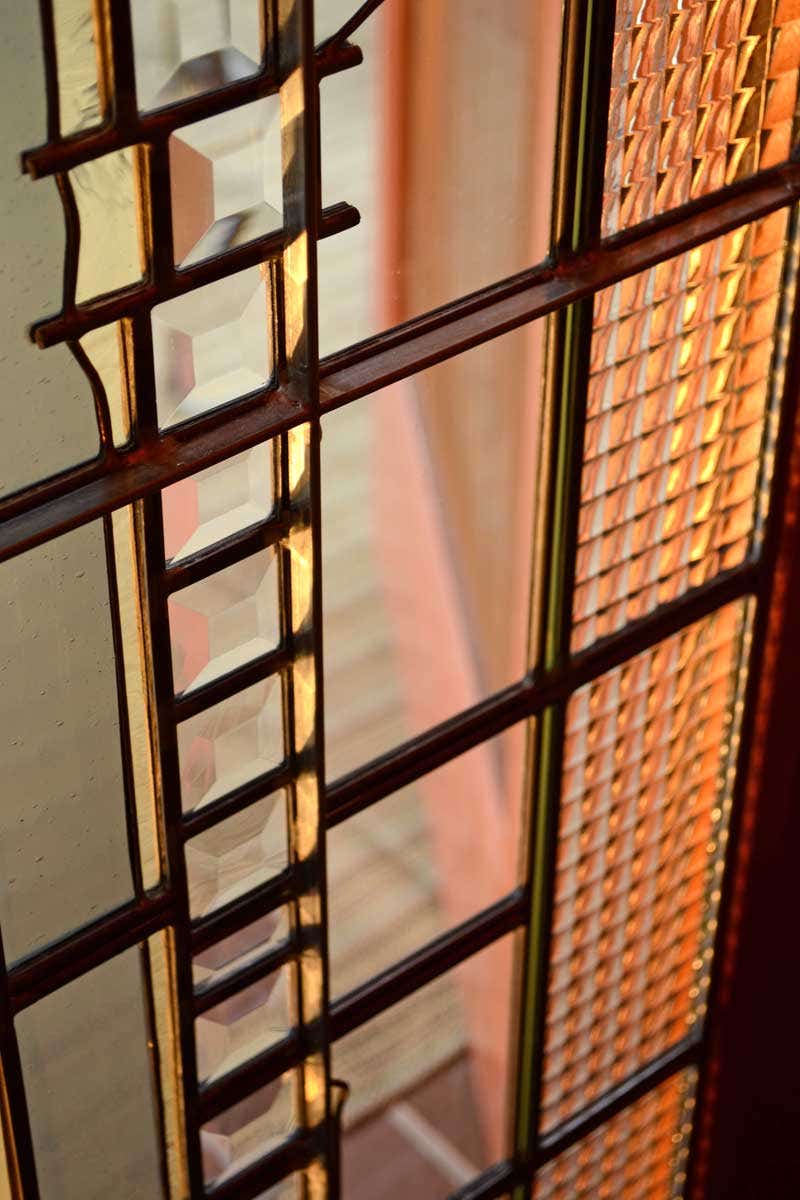
Key elements are expressed in beveled glass prisms, stacked in some occasions with various hues of amethyst glass. The insertion of colored glass rods within lead came combine structure with references to the house’s color palette, as well as colors meaningful to us. Double-reeded glass partners with other textures; opal and Vaseline glasses create a moderated window that still affords views to the garden and screen-house beyond. At the center, a transparent portal remains, a view out and a view in for our much-appreciated guests.
The Design Comes to Light
“We’ve known Michael Pilla for 20 years,” say designers David Heide and Michael Crull. “He’s the glass artist who conserved 80 windows in the Purcell–Cutts House in Minneapolis, and we’ve done other projects with him. He took our initial drawings, our preferences, and further developed the concept.” Pilla is, of course, familiar with Prairie School idioms—note, for example, a reminder of crossed muntins in the upper right corner. The double-reeded glass in the bottom edges picks up on glass used in original doors in the house. Still, this is a wholly contemporary piece. Some elements are meaningful to the clients: amethyst and garnet are their birthstones, and as for the erratically placed prism at the top of the stalk, “where the stem gives way to blossoming—that’s our moment.” The artist’s signature is here, too: Pilla often uses meandering lines of copper foil. “He says this was the most complex new window he’s done,” David says. “We all love it.”
Arts & Crafts Homes and the Revival covers both the original movement and the ongoing revival, providing insight for restoration, kitchen renovation, updates, and new construction. Find sources for kitchen and bath, carpet, fine furniture and pottery, millwork, roofing, doors and windows, flooring, hardware and lighting. The Annual Resource Guide, with enhanced editorial chapters and beautiful photography, helps Arts & Crafts aficionados find the artisans and products to help them build, renovate, and decorate their bungalow, Craftsman, Prairie, Tudor Revival, or Arts & Crafts Revival home.

